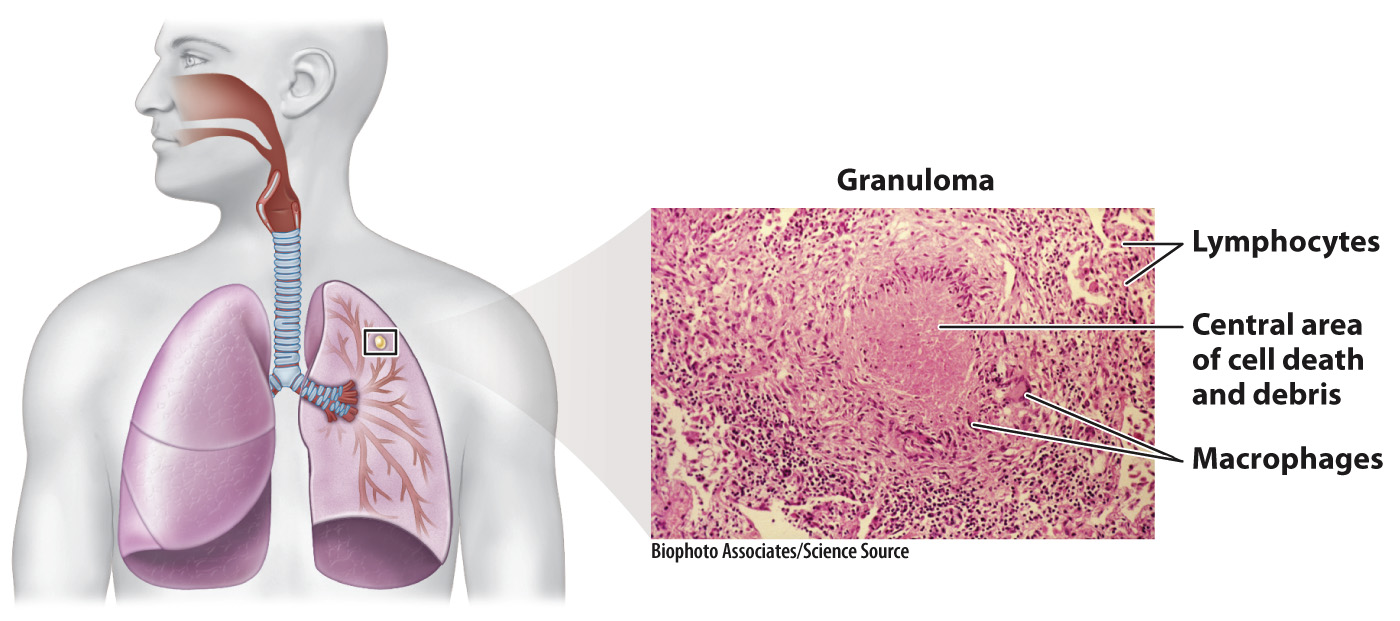Tuberculosis is caused by a slow-
Our second example is tuberculosis, also known as TB. Like the flu, it is spread through small droplets dispersed in the air when a person with active disease coughs or sneezes. Also like the flu, the TB pathogen replicates inside host cells. But unlike the flu, TB is caused by a bacterium, not a virus. TB results from infection by Mycobacterium tuberculosis, a bacterium with several unusual properties. It is very small with a compact genome, lacks a plasma membrane outside the cell wall, and replicates exceedingly slowly. M. tuberculosis takes about 16–
938
Tuberculosis is very common: It is estimated that about a third of the world’s population has TB. Symptoms are absent in most cases because the bacteria are in a dormant state. About 10% of cases are active, characterized by chronic cough, fever, night sweats, and the weight loss that gives TB its other name: consumption.
Tuberculosis primarily affects the lungs. The bacteria infect macrophages in the alveoli of the lungs, where they replicate. In response, infected macrophages release cytokines, recruiting T and B cells to the site of infection. These lymphocytes surround the infected macrophages, forming a structure called a granuloma (Fig. 43.19). The granuloma helps to prevent the spread of the infection and aids in killing infected cells.

Many TB cases remain asymptomatic. However, the bacteria can sometimes overcome host defenses, especially if the immune system is compromised or suppressed, as in the case of co-
Diagnosis poses challenges, especially in the case of asymptomatic infections. The tuberculin skin test is performed by injecting protein from the bacteria under the skin and observing whether or not a reaction, in the form of a hard, raised area, occurs. A positive skin test is an example of a delayed hypersensitivity reaction caused by the recruitment of memory T cells to the site of inoculation, indicating prior infection with M. tuberculosis. Unfortunately, the test is not always accurate, so newer tests are being developed.
Developing an effective vaccine is challenging. The only one currently available is BCG (Bacillus Calmette-